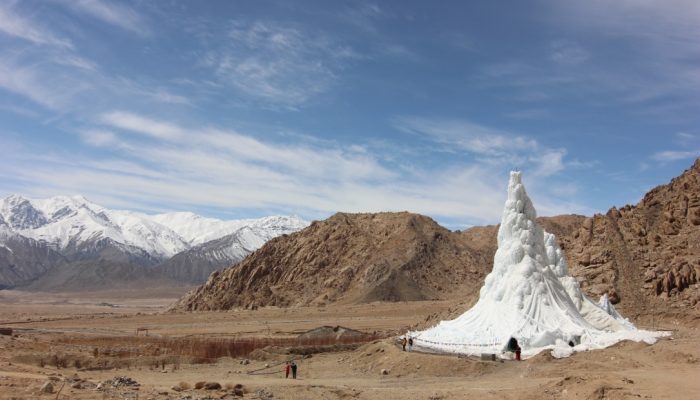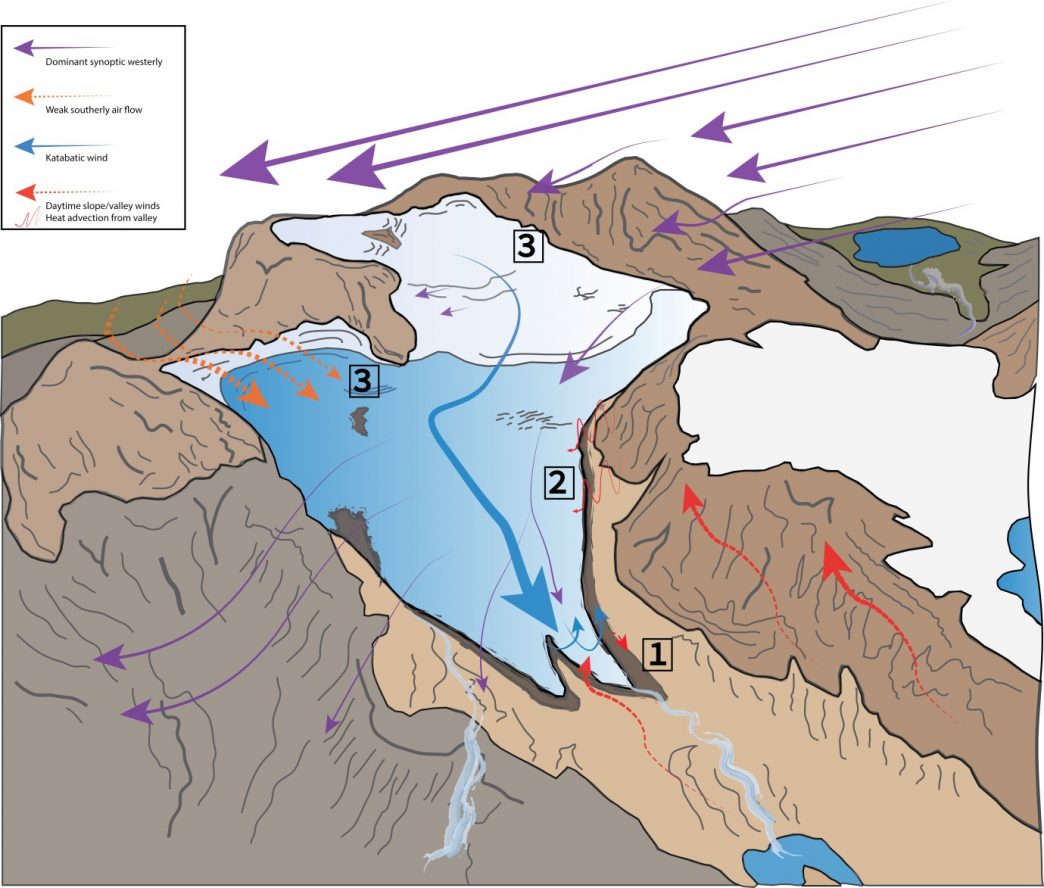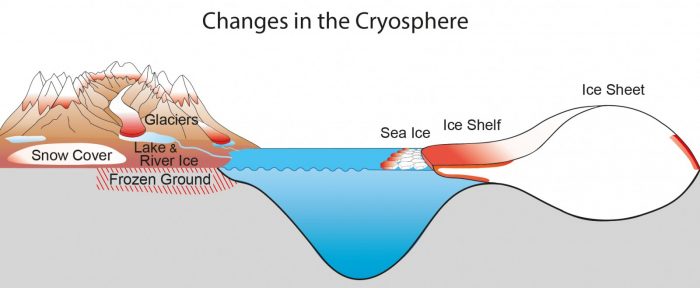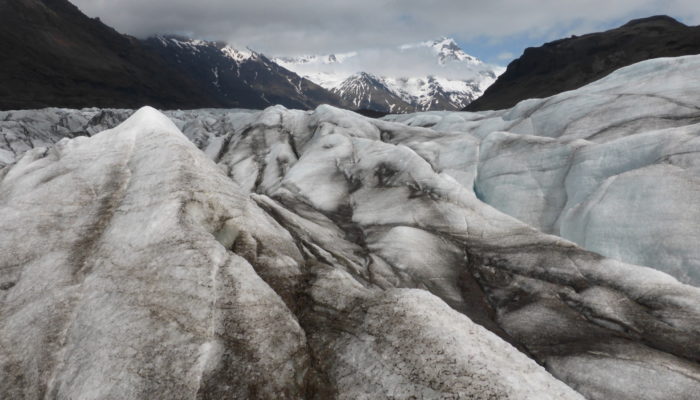As the Arctic is warming faster than the global average, Arctic glaciers are rapidly melting. My research is about the fate of glacial organic carbon when the ice containing it melts. To investigate these processes, I travelled to several glaciers, an activity full of challenges… and rewards! My research Glacier ice covers about 11% of Earth’s land surface, and contains within it a globally ...[Read More]
Image of the Week – Fifty shades of May (Glacier)
With over 198 000 glaciers in the world, you can always find a glacier that fits your mood or a given occasion. So why not for example celebrate the first Image of the Week of May with a picture of the aptly named May Glacier? May Glacier is in fact not named after the month, but after Mr May, an officer onboard the Flying Fish during her expedition to the East Antarctic coast in the 1840s. Apart ...[Read More]
Image of the Week – Ice Stupas: a solution for Himalayan water shortage?

As the world searches for practical innovations that can mitigate the impact of climate change, traditional methods of environmental management can offer inspiration. In Hindu Kush and Karakoram region, local people have been growing, or grafting, glaciers for at least 100 years. Legend has it that artificial glaciers were grown in mountain passes as early as the twelfth century to block the advan ...[Read More]
Image of the week – Micro-organisms on Ice!

The cold icy surface of a glacier doesn’t seem like an environment where life should exist, but if you look closely you may be surprised! Glaciers are not only locations studied by glaciologists and physical scientists, but are also of great interest to microbiologists and ecologists. In fact, understanding the interaction between ice and microbiology is essential to fully understand the gla ...[Read More]
Image of the Week – Drilling into a Himalayan glacier

How water travels through and beneath the interior of debris-covered glaciers is poorly understood, partly because it can be difficult to access these glaciers at all, never mind explore their interiors. In this Image of the Week, find out how these aspects can be investigated by drilling holes all the way through the ice… Hydrological features of debris-covered glaciers Debris-covered glaciers ca ...[Read More]
Image of the Week – Ice on Fire (Part 2)

This week’s image looks like something out of a science fiction movie, but sometimes what we find on Earth is even more strange than what we can imagine! Where the heat of volcanoes meets the icy cold of glaciers strange and wonderful landscapes are formed. The Kamchatka Peninsula, in the far East of Russia, has the highest concentration of active volcanoes on Earth. Its climate is cold due ...[Read More]
Image of the Week – On the tip of Petermann’s (ice) tongue
5th August 2015, 10:30 in the morning. The meeting had to be interrupted to take this picture. We were aboard the Swedish icebreaker Oden, and were now closer than anyone before to the terminus of Petermann Glacier in northwestern Greenland. But we had not travelled that far just for pictures… Petermann’s ice tongue Petermann is one of Greenland’s largest “marine terminating glaciers”. As the name ...[Read More]
Katabatic winds – A load of hot (or cold) air?

It might seem obvious that a warming world will lead to a reduction in glacial ice cover, but predicting the response of glaciers to climatic change is no simple task (even within the short term). One way to approach this problem is to come up with relationships which describe how glaciers interact with the world around them, for example, how the ice interacts with the air above it. Our post today ...[Read More]
Image of the Week – Climate Change and the Cryosphere

While the first week of COP22 – the climate talks in Marrakech – is coming to an end, the recent election of Donald Trump as the next President of the United States casts doubt over the fate of the Paris Agreement and more generally the global fight against climate change. In this new political context, we must not forget about the scientific evidence of climate change! Our figure of the week, tod ...[Read More]
Sea Level “For Dummies”
Looking out over the sea on a quiet day with no wind, the word “flat” would certainly pop up in your mind to describe the sea surface. However, this serene view of a flat sea surface is far from accurate at the global scale. The apparent simplicity behind the concept of sea level hides more complex science that we hope to explain in a simple manner in today’s “For Dummies” post, which will g ...[Read More]




